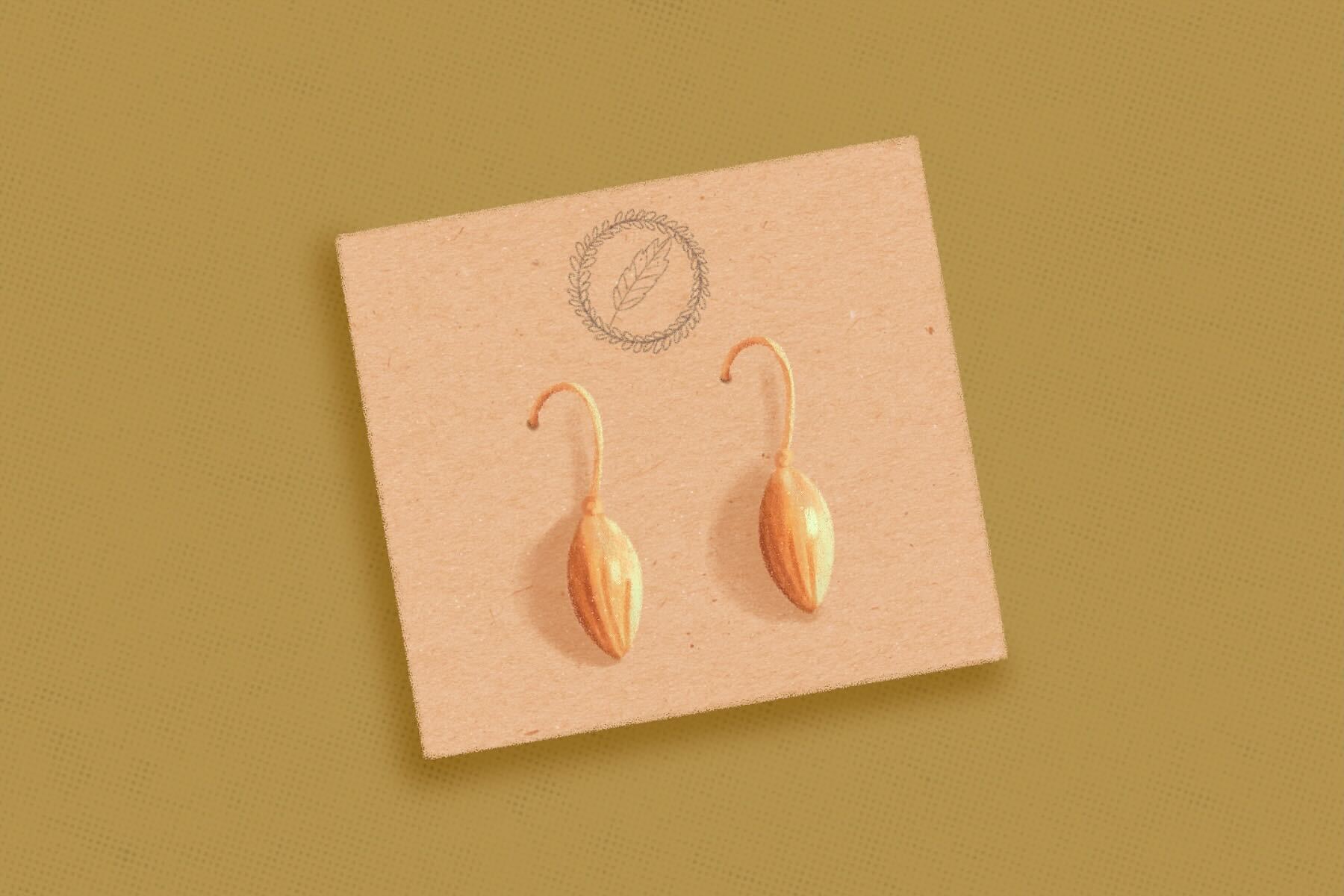We often hear about sustainable clothing, but what about jewelry? Mining for precious stones and other raw materials has an immense environmental impact, but it is not discussed as much in the conversation about ethical fashion. Yet, the impact of your accessories goes beyond elevating your outfit. So, how can you be a conscious consumer when decking yourself out in jewels? The first step is understanding the process of mining and its consequences.
Similar to the fashion industry, jewelry production comes with considerable concerns in regard to its resulting impacts on the environment and worker safety. The metals and gemstones that are used in jewelry must be mined from the Earth, a practice that greatly affects the area being mined. Mining destroys ecosystems, as land is displaced to extract the desired product. Additionally, the practice, which releases significant amounts of greenhouse gases into the atmosphere, contaminates water and nearby soil. In a recent study conducted in 2019, it was determined that, on average, gold mining was responsible for 0.8 tonnes of CO2 for every ounce of gold that was produced.
Mining also produces considerable amounts of toxic waste. Even when the proper precautions are in place, waste can make its way into the surrounding environment, negatively affecting neighboring ecosystems and communities. The waste sludge produced is mostly composed of arsenic, lead, mercury, cyanide and petroleum byproducts, and also includes roughly three dozen foreign, dangerous compounds. The average gold ring accounts for more than 20 tons of waste during its manufacture.
Gold mining typically entails a process called heap leaching as well. To extract the desired gold from the ore and rock, cyanide is poured through piles of earth, and the collected runoff is then subjected to an electro-chemical process to extract the gold. But, only a small portion of what is mined leads to the desired product, meaning 99.99% of the treated soil ends up as a waste product. Since it is toxic and hard to dispose of, many contractors opt to simply leave the piles of byproducts to sit and leach into the surrounding area. It is a common sight in gold mines to see the heaps scattered around the site, with some as tall as 30-story buildings, encompassing entire mountainsides. Cyanide is incredibly toxic and, unfortunately, when the mounds are abandoned, the chemicals infiltrate the surrounding area, poisoning ecosystems and communities. The strong price-performance ratio of gold has led to even more mines opening in the past few years, meaning this problem is growing.
The process of mining for silver is equally as damaging. Moreover, many pieces of jewelry also feature natural stones. While beautiful, gemstones are still hard to mine and their extraction degrades the surrounding area. On top of the environmental impact, one must consider how mining affects the surrounding communities. For example, many workers and their families live nearby mining sites. When so much toxic waste is exposed to the environment and leaches into the groundwater, many communities, such as Miramar, Costa Rica, are exposed to these harmful chemicals and suffer serious health consequences. These risks can include acute and chronic toxicity, anemia, cancer, as well as liver, kidney and intestinal damage. The impacts of a mining operation can be incredibly widespread, as the toxic compounds are washed down streams and rivers, affecting far away areas. For developing countries, this can be detrimental, as communities rely on these bodies of water for food, hygiene and sanitation.
One must also consider the impact mining has on the workers. Daily exposure to these chemicals increases their susceptibility to the accompanying health risks. They also are subjected to dangerous conditions such as poor ventilation, flooding, fires and mine collapses. For these reasons, the mining industry accounts for more deaths and injuries per year than any other industry. More than 15,000 miners are killed every year. Unfortunately, this only counts the official deaths, meaning the number is most likely much greater. This does not even account for the deaths associated with indirect mining impacts such as pollution or conflict over products. With such a death count, it is easy to understand how the term “blood diamond” came to be.
The logistics of the industry make it hard to create jewelry sustainably. One major problem is the lack of chain transparency. Many mining operations are conducted in underdeveloped countries, and the products often pass through many hands before even touching the market, making it hard to trace raw materials back to their source and even harder to trace the finished jewelry product. Mines are not all created equal, with only four mines accounting for 86% of the 180 million tonnes of toxic waste dumped into bodies of water each year. This means that where your jewelry comes from matters.
To tackle the problem, IBM has introduced blockchain technology to provide transparency to the supply chain of the mined products. DeBeers is also using blockchain to document diamond sourcing. Both endeavors are incredibly exciting and hold the potential to address some of these important issues, however, both are still in their preliminary stages.
To get around many of the problems surrounding the production of sustainable jewelry, some retailers are turning to recycled metals to create their products. Most source these materials from within the jewelry industry, however, some turn to other sectors, such as industrial parts, harvesting gold, silver, and other precious metals from goods such as circuit boards and computer parts. Sustainable retailers are also looking into lab-grown gemstones to eliminate the need for mining altogether. For some sustainable retailers who use these practices, try Mejuri, Soko or Molten Gold.
Humans have always loved to adorn themselves with precious metals and stones, and today is no different, with jewelry boasting a global market worth $266.53 billion. However, it is important to consider everything that goes into production — the emissions, the pollution, the lives. With such an emphasis being placed on sustainable fashion, it is vital that we do not forget about the sustainability of the most important part of any outfit: the accessories.

















